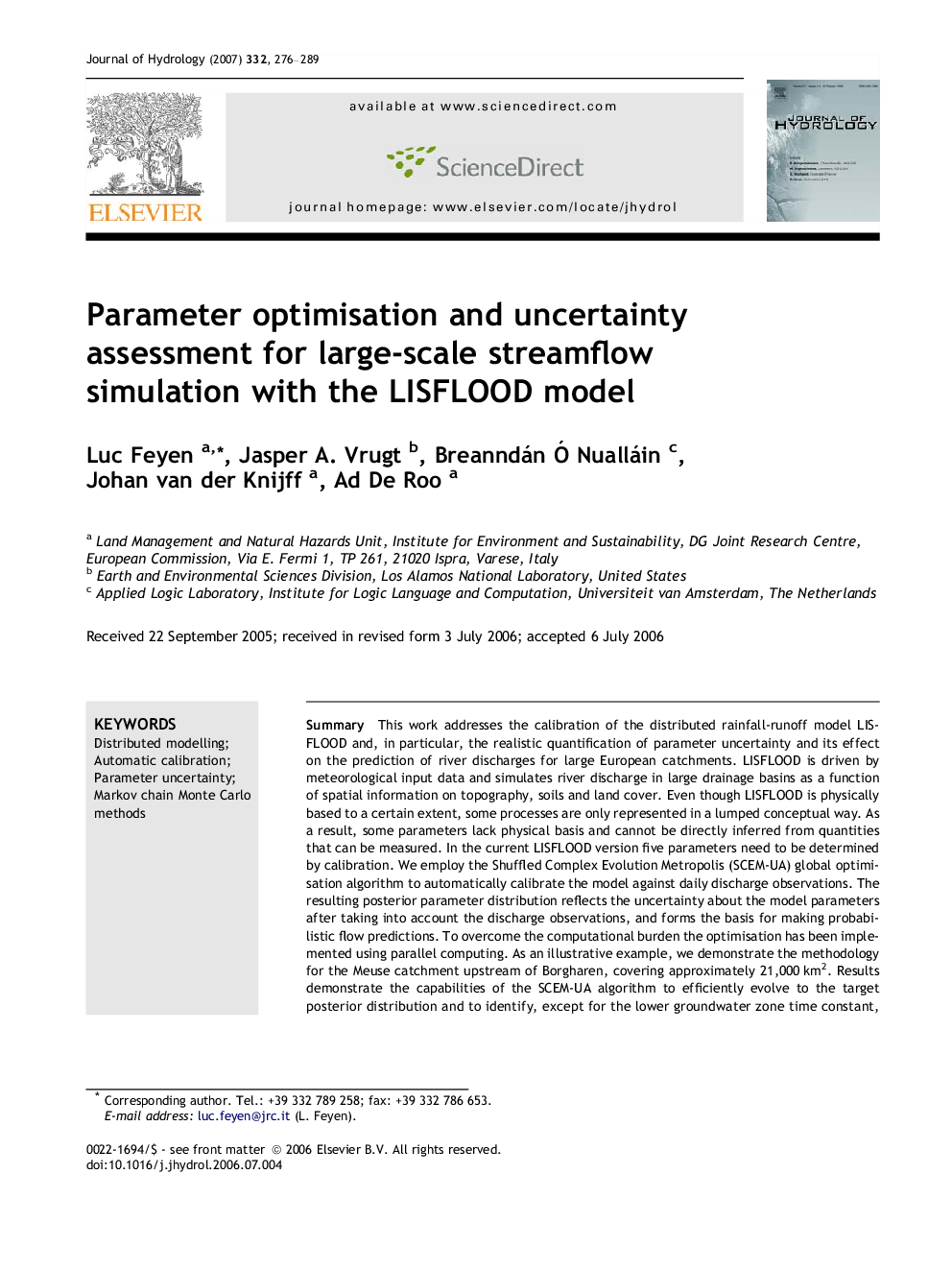| Article ID | Journal | Published Year | Pages | File Type |
|---|---|---|---|---|
| 4580317 | Journal of Hydrology | 2007 | 14 Pages |
SummaryThis work addresses the calibration of the distributed rainfall-runoff model LISFLOOD and, in particular, the realistic quantification of parameter uncertainty and its effect on the prediction of river discharges for large European catchments. LISFLOOD is driven by meteorological input data and simulates river discharge in large drainage basins as a function of spatial information on topography, soils and land cover. Even though LISFLOOD is physically based to a certain extent, some processes are only represented in a lumped conceptual way. As a result, some parameters lack physical basis and cannot be directly inferred from quantities that can be measured. In the current LISFLOOD version five parameters need to be determined by calibration. We employ the Shuffled Complex Evolution Metropolis (SCEM-UA) global optimisation algorithm to automatically calibrate the model against daily discharge observations. The resulting posterior parameter distribution reflects the uncertainty about the model parameters after taking into account the discharge observations, and forms the basis for making probabilistic flow predictions. To overcome the computational burden the optimisation has been implemented using parallel computing. As an illustrative example, we demonstrate the methodology for the Meuse catchment upstream of Borgharen, covering approximately 21,000 km2. Results demonstrate the capabilities of the SCEM-UA algorithm to efficiently evolve to the target posterior distribution and to identify, except for the lower groundwater zone time constant, the LISFLOOD calibration parameters using daily discharge observations. It should be noted that the posterior parameter distributions are based on the assumption of independent errors. Analysis of the residuals revealed there is a strong evidence to reject this assumption. This will impact on the parameter posterior distributions and also lead to underestimation of the prediction limits.
